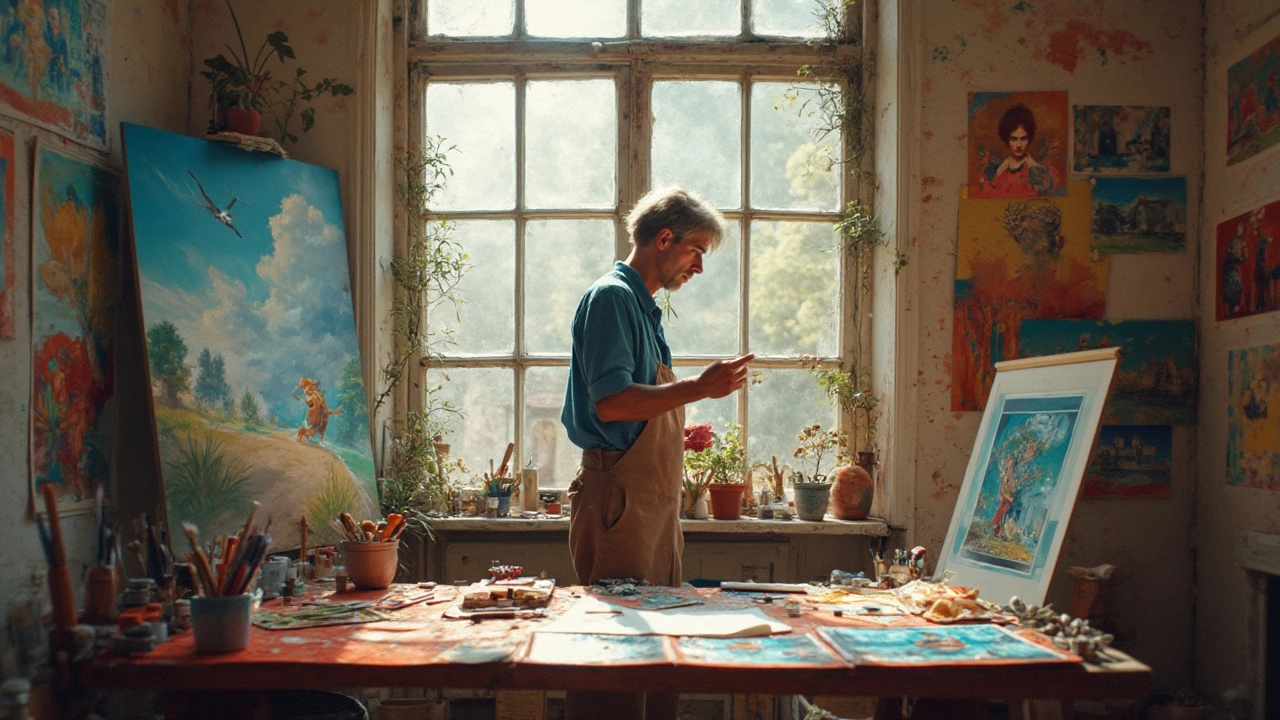Giclee Printing Explained: A Simple Guide for Art Lovers
If you’ve ever wondered why some art prints look unbelievably close to the original, chances are you’ve seen a giclee. It’s not a fancy brand name – it’s a printing method that uses high‑resolution inkjet technology to reproduce artwork with amazing detail and color accuracy. In plain terms, a giclee is a high‑quality digital print that can last for decades when done right.
So, how does it work? First, the artist’s work is scanned or photographed at a very high resolution, often 2400 dpi or more. The file is then checked for color balance and any imperfections. Next, a large, professional‑grade inkjet printer sprays microscopic droplets of archival ink onto archival‑grade paper or canvas. Because each tiny droplet can be precisely placed, the final print captures subtle tones, gradients, and textures that lower‑quality prints miss.
Why Choose Giclee Over Regular Prints?
There are three main reasons people opt for giclee prints. One, the color range is huge – you get deep blacks, vibrant reds, and soft pastels all in one piece. Two, the paper or canvas is usually thick and acid‑free, which helps the print stay looking fresh for 30‑100 years depending on the ink used. Three, the process is scalable: the same file can produce a single, museum‑grade piece or a whole series of limited editions without losing quality.
Artists love giclee because it lets them sell more copies of a work while keeping the look and feel of the original. Collectors like it because they can own a piece that feels like a painting without the price tag of an oil on canvas. And galleries appreciate the consistency – every print from the same file looks identical, which makes inventory easier.
How to Spot a Genuine Giclee Print
Not every “giclee” on the market is genuine. Here are a few quick checks you can do before you buy:
- Check the paper or canvas. Authentic giclee prints use archival‑grade material. It should feel thick, smooth, and slightly textured – not like cheap glossy photo paper.
- Look for a signature or edition number. Most genuine giclees are limited editions. You’ll often see the artist’s signature and something like “5/50” printed on the back.
- Examine the edges. Inkjet prints have a crisp, clean edge without feathering. If the colors look blurry at the borders, it might be a lower‑quality print.
- Ask about the printer. Reputable giclee printers will give you details about the ink brand (often pigment‑based) and the paper supplier.
If the seller can’t provide any of this info, walk away or ask for a close‑up photo of the back of the print. Genuine giclees are usually transparent about their production process.
Finally, think about where you’ll display the piece. Because the inks are UV‑resistant, a giclee can hang in bright rooms without fading quickly. Still, if you want it to last forever, consider framing it behind UV‑filter glass.
In short, giclee printing bridges the gap between original artwork and affordable reproductions. With the right paper, ink, and printer, you get a piece that looks—and lasts—like the real thing. Use the tips above to make sure you’re getting the real deal, and enjoy the vibrant detail that only a true giclee can provide.
At Renaissance Harmony Hub Agency, we work with top‑tier printers to help artists bring their work to life in giclee format. If you’re an artist looking to expand your reach or a collector hunting for authentic prints, get in touch with us for reliable, high‑quality giclee solutions.

4 Apr 2025
Discover the best printing techniques for art prints to enhance your artwork effectively. Learn about different methods like giclée, screen printing, and more, to find out which suits your artistic needs. Explore cost considerations, and understand how each technique impacts the final product. This guide helps artists choose the right printing to maintain quality and longevity while staying within budget.
Continue reading...
